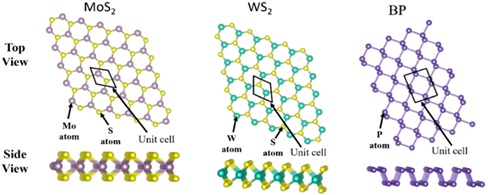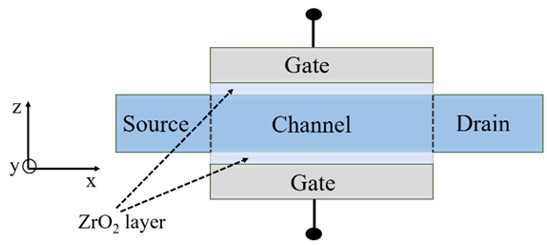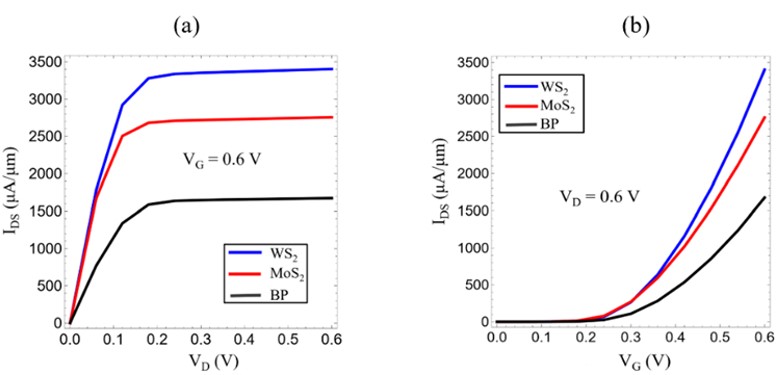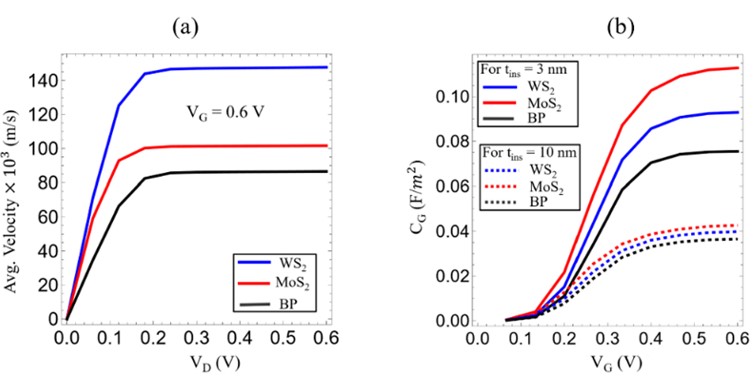Quantum Transport Properties of Monolayer MoS2, WS2, and Black Phosphorus: A Comparative Study
Kumara S1, Pratap S2*
DOI:10.61343/jcm.v1i02.20
1 Sandeep Kumara, Department Of Physics Astronomical Science, Central University Of Himachal Pradesh, 176206, HP, India.
2* Surender Pratap, Department Of Physics Astronomical Science, Central University Of Himachal Pradesh, 176206, Hp, India.
A comparative study of the performance analysis of dual-gate ballistic monolayer Molybdenum disulfide (MoS2), tungsten disulfide (WS2), and black phosphorus (BP) field-effect transistors (FETs) is presented. A thorough investigation of output and transfer characteristics infers that WS2 FET exhibits better performance as compared to MoS2 and BP. Furthermore, among all three FETs (MoS2, WS2, and BP), the WS2 based FET has a higher carrier velocity. However, variation of gate capacitance (CG) with gate voltage (VG) reflects a very good electrostatic gate control of MoS2 FET due to higher surface charge accumulation. Except for CG, the overall performance of WS2 based FET is better than MoS2 and BP.
Keywords: Transport properties, FET model, Transfer characteristics, Output characteristics
| Corresponding Author | How to Cite this Article | To Browse |
|---|---|---|
| , , Department Of Physics Astronomical Science, Central University Of Himachal Pradesh, 176206, Hp, India. Email: |
Kumara S, Pratap S, Quantum Transport Properties of Monolayer MoS2, WS2, and Black Phosphorus: A Comparative Study. J.Con.Ma. 2023;1(2):94-98. Available From https://jcm.thecmrs.in/index.php/j/article/view/20 |


 ©
© 





 Figure 3: Comparison of output characteristics of n-type monolayer MoS2, WS2, and BP FETs. (a) IDS versus VD at maximum VG = 0.6 V. (b) IDS versus VG at maximum VD = 0.6 V.
Figure 3: Comparison of output characteristics of n-type monolayer MoS2, WS2, and BP FETs. (a) IDS versus VD at maximum VG = 0.6 V. (b) IDS versus VG at maximum VD = 0.6 V. Figure 4: For n-type monolayer MoS2, WS2, and BP FETs (a) ballistic transfer characteristics at maximum VD = 0.6 V and (b) variation of gate CG with increasing VG as a function of insulator thickness (tins).
Figure 4: For n-type monolayer MoS2, WS2, and BP FETs (a) ballistic transfer characteristics at maximum VD = 0.6 V and (b) variation of gate CG with increasing VG as a function of insulator thickness (tins).